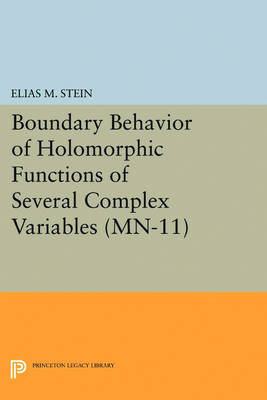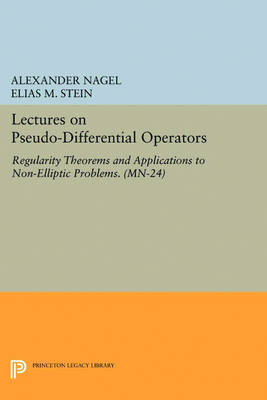Mathematical Notes
3 primary works • 5 total works
Book 11
Boundary Behavior of Holomorphic Functions of Several Complex Variables. (MN-11)
by Elias M Stein
This book has as its subject the boundary value theory of holomorphic functions in several complex variables, a topic that is just now coming to the forefront of mathematical analysis. For one variable, the topic is classical and rather well understood. In several variables, the necessary understanding of holomorphic functions via partial differential equations has a recent origin, and Professor Stein's book, which emphasizes the potential-theoretic aspects of the boundary value problem, should become the standard work in the field.
Originally published in 1972.
The Princeton Legacy Library uses the latest print-on-demand technology to again make available previously out-of-print books from the distinguished backlist of Princeton University Press. These editions preserve the original texts of these important books while presenting them in durable paperback and hardcover editions. The goal of the Princeton Legacy Library is to vastly increase access to the rich scholarly heritage found in the thousands of books published by Princeton University Press since its founding in 1905.
Book 24
Lectures on Pseudo-Differential Operators
by Alexander Nagel and Elias M Stein
The theory of pseudo-differential operators (which originated as singular integral operators) was largely influenced by its application to function theory in one complex variable and regularity properties of solutions of elliptic partial differential equations. Given here is an exposition of some new classes of pseudo-differential operators relevant to several complex variables and certain non-elliptic problems.
Originally published in 1979.
The Princeton Legacy Library uses the latest print-on-demand technology to again make available previously out-of-print books from the distinguished backlist of Princeton University Press. These editions preserve the original texts of these important books while presenting them in durable paperback and hardcover editions. The goal of the Princeton Legacy Library is to vastly increase access to the rich scholarly heritage found in the thousands of books published by Princeton University Press since its founding in 1905.
Book 102
Hardy Spaces on Homogeneous Groups. (MN-28), Volume 28
by Gerald B. Folland and Elias M Stein
Introduction to Partial Differential Equations. (MN-17), Volume 17
by Gerald B. Folland
The description for this book, Introduction to Partial Differential Equations. (MN-17), Volume 17, will be forthcoming.




